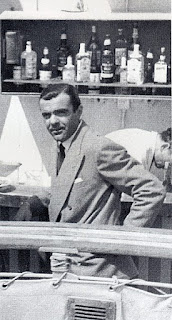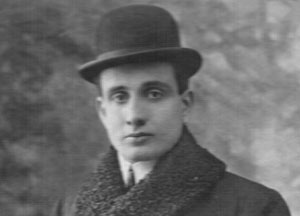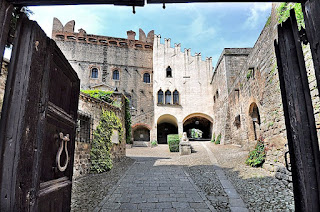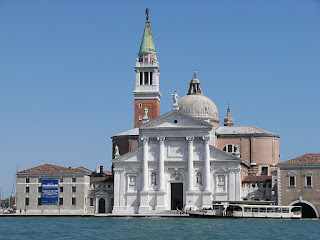Alberto Moravia - journalist and writer
Italian novelist recognised as major 20th century literary figure
The novelist Alberto Moravia was born Alberto Pincherle on this day in 1907 in Rome. He adopted Moravia, the maiden name of his paternal grandmother, as a pen name and became a prolific writer of short stories and novels. Much of his work has been made into films. Before the Second World War, he had difficulties with the Fascist regime, which banned the publication of one of his novels. But his anti-Fascist novel Il conformista later became the basis for the film The Conformist directed by Bernardo Bertolucci. In 1941 he married the novelist Elsa Morante and they went to live first on Capri, and then in the Ciociaria area of Lazio before returning to Rome after it was liberated in 1944. Moravia was once quoted as comparing a childhood illness, which confined him to bed for a long period, with Fascism. He said they had both made him suffer and do things he otherwise would not have done. He died in Rome in 1990 and is remembered today as an important literary figure of the 20th century. Read more…
_______________________________________
Fabio Grosso - World Cup hero
Unspectacular career illuminated by unforgettable goal
Fabio Grosso,the unlikely hero of Italy's victory in the 2006 World Cup in Germany, was born on this day in 1977 in Rome. Selected for Marcello Lippi's squad for the Finals as cover for first-choice left-back Gianluca Zambrotta, Grosso eventually secured a place in Lippi's team and went on to score one of the most important goals in Italy's World Cup history as they beat the hosts, Germany, to reach the final. He then secured his place in azzurri folklore by scoring the winning penalty in the final against France as Italy lifted the trophy for the fourth time, equalling Brazil's record. Yet Grosso arrived at the finals as a player who, if not an unknown, seldom attracted attention and had enjoyed a career that was respectable but certainly not eye-catching. Five years before 2006, he was playing in Serie C for Chieti, in the town in Abruzzo where he grew up, and only two and a half years before the tournament he left Serie A side Perugia to play for Palermo in Serie B. Nonetheless, Palermo did win promotion to Serie A soon after Grosso arrived and at the same time he quietly established himself as Lippi's first choice at left back in the 2006 World Cup qualifying competition. Read more…
_______________________________________
Laura Antonelli - actress
Pin-up star of 1970s sex-comedies
The actress Laura Antonelli, whose career was at its peak while Italian cinema audiences were indulging a taste for sex-comedies during the 1970s, was born on this day in 1941 in Pula, a port city now part of Croatia but then known as Pola, capital of the Italian territory of Istria. A curvaceous brunette who posed for both the Italian and French editions of Playboy magazine in the early 1980s, Antonelli was mostly remembered for appearing scantily clad opposite male stars such as Marcello Mastroianni and Michele Placido, yet she was a talented actress, winning a Nastro d’Argento - awarded by Italian film journalists - as best actress in Salvatore Samperi’s 1974 comedy-drama Malizia (Malice). She also worked on several occasions for Luchino Visconti, one of Italy’s greatest directors. Indeed, she starred in 1976 as the wife of a 19th century Roman aristocrat in Visconti’s last film, L’Innocente (The Innocent), based on the novel The Intruder by Gabriele d'Annunzio. However, the success of her career was largely built on roles in films such as Devil in the Flesh (1969), The Divine Nymph (1975) and Tigers in Lipstick (1979), the content of which outraged Italy’s fledgling feminist movement and shocked the Catholic Church. Read more…
_______________________________________
Mario Nascimbene - film music composer
First Italian to score for Hollywood
The composer Mario Nascimbene, most famous for creating the music for more than 150 films, was born on this day in 1913 in Milan. Nascimbene’s legacy in the history of Italian cinema is inevitably overshadowed by the work of Ennio Morricone and the late Nino Rota, two composers universally acknowledged as giants of Italian film music. Yet the trailblazer for the great Italian composers of movie soundtracks was arguably Nascimbene, whose engagement to score Joseph L Mankiewicz’s 1954 drama The Barefoot Contessa won him the distinction of becoming the first Italian to write the music for a Hollywood production. It was such an unexpected commission that Nascimbene confessed in an interview in 1986 that when he was first contacted about the film by Mankiewicz’s secretary he shouted down the phone and hung up, suspecting a hoax perpetrated by a friend who only a few months earlier had caught him out in a similar wind-up over the score for the William Wyler movie Roman Holiday. Only after a third call from the secretary did he reluctantly agree to meet the director and when his doorbell rang he was convinced his friend would be on the other side. Read more…
________________________________________
Alessandro Altobelli - World Cup Winner
Scored Italy’s third goal in 1982 Final
Alessandro Altobelli, one of only four players to score in a World Cup final after starting on the substitutes’ bench, was born on this day in 1955 in Sonnino, a small medieval town in mountainous southern Lazio. At the age of 26, Altobelli was part of Enzo Bearzot’s squad for the 1982 World Cup finals in Spain, in which Italy triumphed for the first time since their two tournament victories under Vittorio Pozzo in the 1930s. A striker with Internazionale of Milan, Altobelli did not start a single game in the 1982 finals and had played only a few minutes during Italy’s progress to the knock-out stages. But he was called on after just seven minutes of the Final against West Germany, replacing Francesco Graziani, stricken with a shoulder injury, and his patience waiting for his chance was rewarded when he finished an Italian counter-attack with their third goal in the second half, giving the azzurri a 3-0 lead that the Germans could not overcome. Italy’s tournament hero, Paolo Rossi, had scored their opening goal before Marco Tardelli fired home their second, which he celebrated wildly in what became the enduring image of the tournament. Read more…
________________________________________
Caterina Scarpellini – astronomer and meteorologist
Female ‘assistant’ remembered for her important discoveries
The astronomer Caterina Scarpellini, who discovered a comet in 1854 and was later awarded a medal by the Italian government for her contribution to the understanding of astronomy and other areas of science, died on this day in 1873 in Rome. Caterina had moved from her native Foligno in Umbria to Rome at the age of 18 to work as an assistant to her uncle, Abbe Feliciano Scarpellini, who was the director of the Roman Campidoglio Observatory. He had been appointed in 1816 by Pope Pius VI to a new chair of sacred physics in the Roman College of the Campidoglio, marking a turning point in the attitude of the Roman Catholic Church to science. From 1847 onwards, Caterina edited Corrispondenza Scientifica in Rome, a bulletin publishing scientific discoveries. She carried out her observations six times a day and reported on her findings. She married Erasmo Fabri, who was also an assistant at the observatory, and together they established a meteorological station in Rome in 1856. Caterina published reports of her astronomical observations and meteorological measurements in Italian, French and Belgian journals and also wrote about electrical, magnetic and geological phenomena. Read more…











.jpg)

.jpg)









.jpg)
.png)

.jpg)


%20(2).jpg)

2.jpg)


